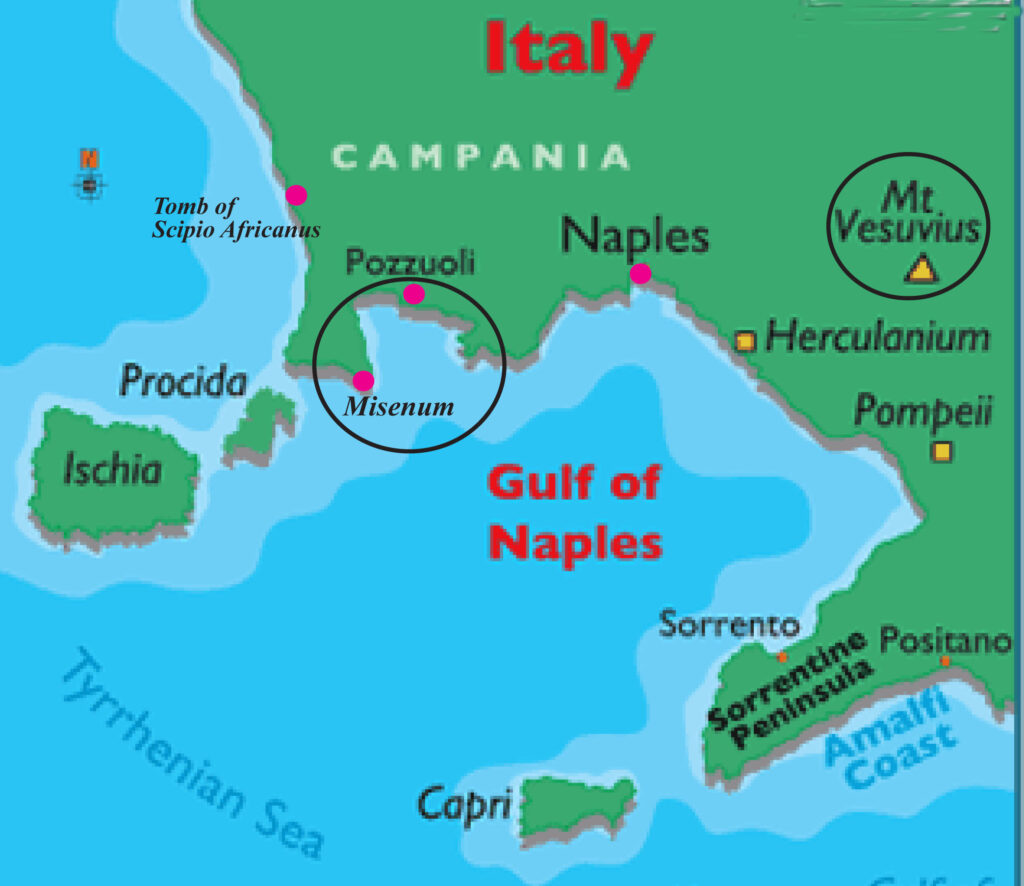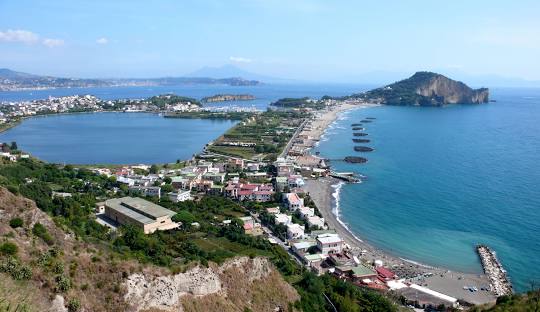Did you know that the entrance to the Underworld, according to poets Virgil and Dante, is on the Bay of Naples? It’s called Campi Flegrei (“The Burning Fields”) an underwater basin (“caldera”) of collapsed volcanoes—about 40 of them—that are still active. Vesuvius isn’t the only natural threat that feeds Neapolitan anxiety.

Sitting right on top of the caldera is the city of Pozzuoli (pohtz-WHOA-lee) which has experienced some 2,500 mini-earthquakes in the past three months. The city is Sofia Loren’s hometown, and around the time of Christ it was the port of entry to Rome. Saints Peter and Paul entered Italy through Pozzuoli.
Its Roman name was Puteoli which derived from the Latin puteo (to stink), a description of the sulfuric fumes often emitted by local earth fissures. In Italian, pozzo means “a well” and puzzo mean “a stink” – take your pick.

What’s unique about Campi Flegrei is that so much activity takes place underground and underwater that the land around Pozzuoli actually rises and falls, once nearly 23 feet. A sunken Roman marketplace literally rose from the harbor with barnacles still on the columns. In 1538, the caldera erupted and spewed enough debris into the atmosphere to create 433-ft high Monte Nuovo in eight days. I found no records of casualties from this eruption, but villages were buried under the ‘new mountain’ as well as Marcus Cicero’s country home.
Cicero was one of countless Romans who made the Bay of Naples their playground. Today, Pozzuoli’s neighboring town of Baia, with its hot springs, overlooks ancient Baiae which sank into the harbor with its roads, villas, gardens, pillars, mosaic-floors, and statuary. It is now an underwater archeological park. Who knows, it may rise again!
Julius Caesar had a villa on the caldera, as did Emperor Nero. Emperor Hadrian (AD 117-138) enjoyed the area and spent his last days in Baiae. Scipio Africanus, who defeated Hannibal in 202 BC, is buried a few miles up the coast. Emperor Tiberius (AD 14-37) ruled from Capri.
A stone’s throw from Pozzuoli is Miseno (Misenum) home of Rome’s western fleet as well as Bacoli (Bauli), Rome’s naval academy. Pliny the Elder who commanded that Roman fleet sailed from Misenum to rescue survivors of Vesuvius, across the bay, in AD 79. Unfortunately, he died in the attempt.
There are so many other interesting facts about this area: the third largest surviving Roman amphitheater after the Colosseum in Rome and one in Capua (north of Naples) is in Pozzuoli. The strongest cement ever created was developed by the Romans using pozzolana – volcanic soil from Pozzuoli.

Scientists aren’t overly worried about an eruption, even though some two million people might be at risk. They cite the low-level and constant releasing of pressure from the caldera. They point out that our own Yellowstone National Park is a similar caldera with similar releases – “Old Faithful.” Still, Italian authorities have evacuation plans they update frequently.
Every region of Italy is a wonder both geographically and historically. For those of us with roots in the Naples area, we can’t help but be in awe of our paesani who live and thrive atop one of the most dangerous spots on Earth. I am especially proud of the part the Bay of Naples has played in the history of Italy, and through our Roman ancestors, the history of the world.
You can be sure that the ancients were also attracted to the plentiful seafood the waters of Naples produced — Hell be damned! Spaghetti frutti di Mare, anyone? -JLM

My professor-sculptor son has visited the Archeological Museum (there are several museums) in the ancient City of Capua and offers that the Archeological Museum is of first-class level in the world.
Interesting to note that the ever-seafaring Greeks and the militaristic Samnites played an earlier role in the “foundation” of Pozzuoli. Speaking of the Greeks and another Italian portal to the Underworld, it is interesting to note that Enna, Sicily was the gateway to Hades for Persephone.